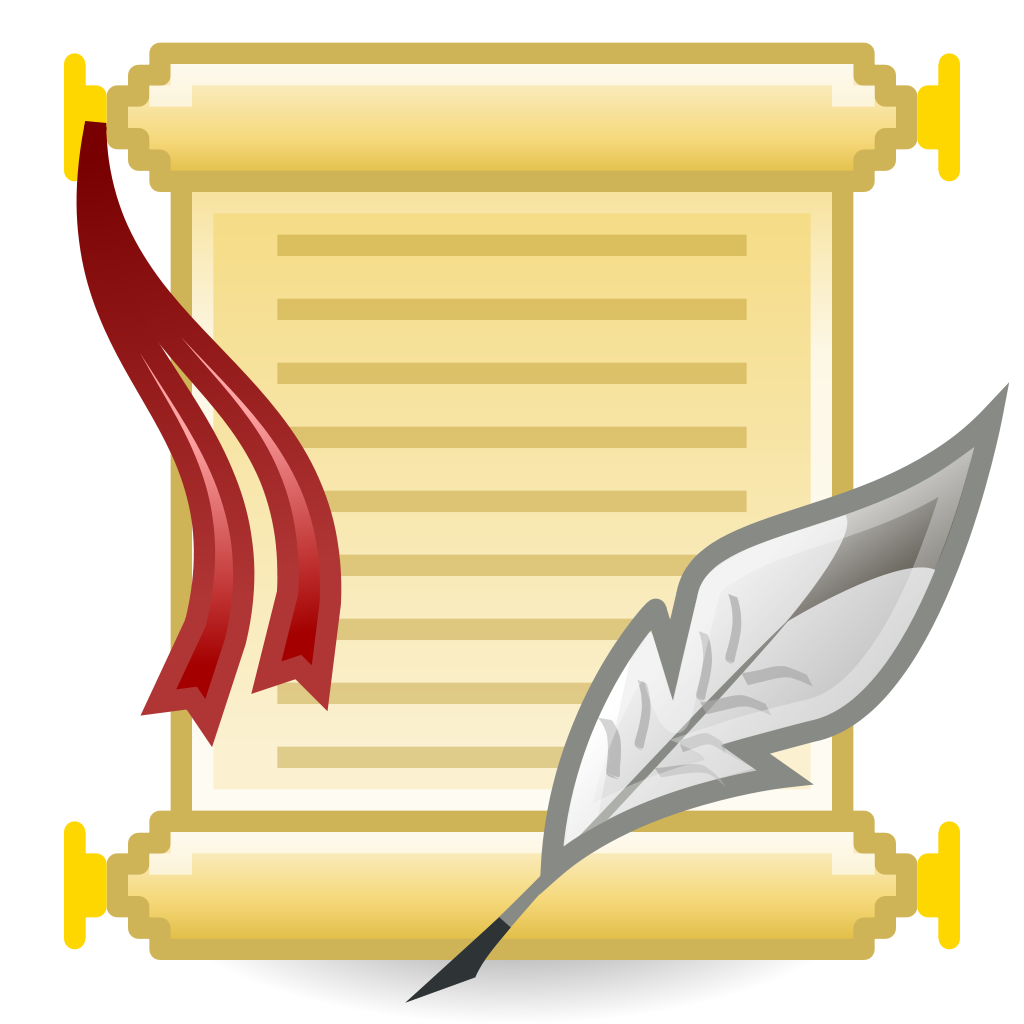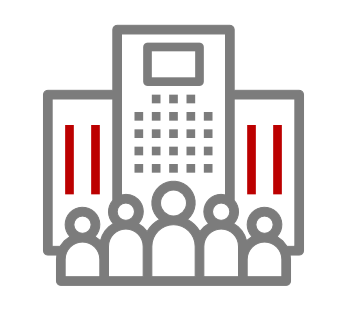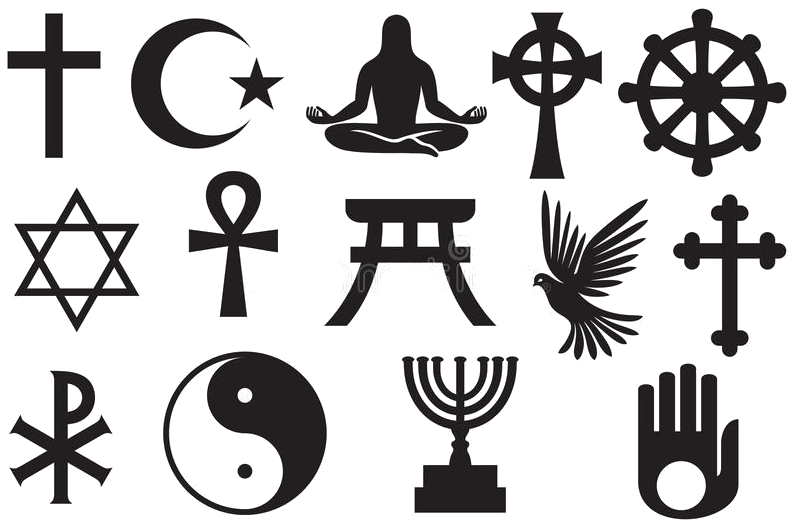
漢德百科全書 | 汉德百科全书
 历史
历史


Joseph Nicéphore Niépce, auch Nièpce oder Niepce (französisch [njɛps]; * 7. März 1765 in Chalon-sur-Saône, Frankreich; † 5. Juli 1833 in Saint-Loup-de-Varennes nahe Chalon-sur-Saône), war der Erfinder der Heliografie, der weltweit ersten fotografischen Technik. Von ihm stammt die erste bis heute erhaltene Fotografie.
约瑟夫·尼塞福尔·涅普斯[1][2](法语:Joseph Nicéphore Nièpce,1765年3月7日-1833年7月5日),“涅普斯”又译“尼埃普斯”[3],法国发明家。现存最早的照片由法国人尼埃普斯在1826年拍摄的。但是现在全世界公认的摄影术的发明者却是法国的路易·达盖尔。

约瑟夫二世(Josef II,1741年3月13日-1790年2月20日)是哈布斯堡—洛林王朝的奥地利大公,1764年成为罗马人民的国王(1764年-1790年在位),1765年加冕为神圣罗马帝国皇帝(1765年-1790年在位),1780年起也是匈牙利国王和波希米亚国王。
Joseph II. (ungarisch II. József, kroatisch Josip II., tschechisch Josef II.) Benedikt August Johann Anton Michael Adam (* 13. März 1741 in Wien; † 20. Februar 1790 ebenda), war ein Fürst aus dem Geschlecht Habsburg-Lothringen, Erzherzog im Erzherzogtum Österreich, wurde 1764 römisch-deutscher König und war von 1765 bis 1790 Kaiser des Heiligen Römischen Reiches, ab 1780 auch König von Böhmen, Kroatien und Ungarn.

约瑟普·布罗兹·铁托(塞尔维亚-克罗地亚语西里尔字母:Јосип Броз Тито,拉丁字母:Josip Broz Tito,1892年5月7日-1980年5月4日),南斯拉夫革命家、政治家,南斯拉夫共产主义者联盟总书记、主席团主席,南斯拉夫社会主义联邦共和国执政35年的总统、总理,南斯拉夫元帅。尽管执政时期被人批评为威权统治,但他的个人形象通常被视为南斯拉夫联邦内各民族统一的象征。他还是不结盟运动发起人之一,与印度总理尼赫鲁、埃及总统纳赛尔共事。
Josip Broz Tito ['jɔsip 'brɔz 'tito] Ausspracheⓘ/? (serbisch-kyrillisch Јосип Броз Тито; * 7. Mai 1892 in Kumrovec, Königreich Kroatien und Slawonien, Österreich-Ungarn als Josip Broz; † 4. Mai 1980 in Ljubljana, SR Slowenien, SFR Jugoslawien, heute Slowenien) war ein jugoslawischer kommunistischer Politiker (BdKJ), antifaschistischer Widerstandskämpfer, marxistischer Theoretiker und bestimmte von 1945 bis 1980 autokratisch die Politik Jugoslawiens, zunächst als Regierungschef, ab 1953 als Staatspräsident.
Josip Broz nahm 1934 den Kampfnamen Tito an, als er Mitglied des Politbüros der seit 1921 verbotenen Kommunistischen Partei Jugoslawiens wurde und in den politischen Untergrund ging. Im Jahr 1937 wurde er Generalsekretär der Partei.
Nach der Besetzung Jugoslawiens im Zweiten Weltkrieg führte Tito als Marschall von Jugoslawien die kommunistischen Partisanen im Kampf gegen die deutschen und italienischen Besatzungsmächte sowie innenpolitische Gegner, wie die faschistischen Ustascha und königstreuen Tschetniks. Nach dem Ende des Zweiten Weltkriegs wurde er zunächst Ministerpräsident (1945–1953) und schließlich Staatspräsident (1953–1980) seines Landes; ein Amt, das er bis zu seinem Tod bekleidete. Er verfolgte nach dem Bruch mit Stalin 1948 eine als Titoismus bezeichnete, von der Sowjetunion unabhängige Politik und galt seit den 1950er Jahren als einer der führenden Staatsmänner der Bewegung der Blockfreien Staaten. Um Tito wurde ein intensiver Personenkult betrieben.

Johannes Calvin (eigentlich Jean Cauvin; * 10. Juli 1509 in Noyon, Picardie; † 27. Mai 1564 in Genf) war ein Reformator französischer Abstammung und Begründer des Calvinismus. Er gilt als Vertreter einer kerygmatischen Theologie.

John Winston Ono Lennon, MBE, geborener John Winston Lennon (* 9. Oktober 1940 in Liverpool; † 8. Dezember 1980 in New York), war ein britischer Musiker, Komponist und Friedensaktivist sowie Oscar- und mehrfacher Grammy-Preisträger. Weltweit berühmt wurde er als John Lennon und als Mitgründer, Sänger und Gitarrist der britischen Rockband The Beatles, für die er neben Paul McCartney die meisten Stücke schrieb. Die Urheber- bzw. Komponistenpartnerschaft Lennon/McCartney ist eine der bekanntesten und erfolgreichsten in der Geschichte der Popmusik.
约翰·温斯顿·小野·列侬(英语:John Winston Ono Lennon),原名约翰·温斯顿·列侬;1940年10月9日—1980年12月8日),英国著名歌手、词曲作者。他作为披头士乐队的创始成员闻名全球,该乐队是流行音乐史上在商业上最成功的团体。他与乐队成员麦卡特尼组成了著名的列侬–麦卡特尼创作组合。

John Maynard Keynes, 1. Baron Keynes [keɪnz] (* 5. Juni 1883 in Cambridge; † 21. April 1946 in Tilton bei Firle, East Sussex) war ein britischer Ökonom, Politiker und Mathematiker.[1] Seine Gedanken haben Theorie und Praxis der Makroökonomie und die Wirtschaftspolitik von Regierungen grundlegend verändert.[2] Er arbeitete wesentlich zu den Ursachen von Konjunkturzyklen und verfeinerte diese Theorien erheblich.[1] Keynes war einer der einflussreichsten Ökonomen des 20. Jahrhunderts.[3][4][5] Seine Ideen sind die Grundlage für die als Keynesianismus bekannte Denkschule und ihre verschiedenen Nachfolger.
约翰·梅纳德·凯恩斯,第一代凯恩斯男爵(英语:John Maynard Keynes, 1st Baron Keynes,1883年6月5日—1946年4月21日),一般称作凯恩斯(或译为凯因斯),英国经济学家。
凯恩斯一反自18世纪亚当·斯密以来尊重市场机制、反对人为干预的经济学思想,他主张政府应积极扮演经济舵手的角色,透过财政与货币政策来对抗经济衰退乃至于经济萧条[1]。
凯恩斯的思想不仅是书本里的学说,也成为1920年代至1930年代世界性经济萧条时的有效对策[2],以及构筑起1950年代至1960年代许多资本主义社会繁荣期的政策思维,因而被夸为“资本主义的‘救星’(或译救世主)”[3]、“战后繁荣之父”等[2]。一度主宰资本主义的凯恩斯思想也成为经济学理论与学派之一,称为“凯恩斯学派”,并衍生数个支系,其影响力持续至今。

Johann Sebastian Bach (* 21. Märzjul./ 31. März 1685greg. in Eisenach, Sachsen-Eisenach; † 28. Juli 1750 in Leipzig, Kursachsen) war ein deutscher Komponist, Kantor, Hofkonzertmeister, Violinist sowie Orgel- und Cembalovirtuose des Barocks aus Thüringen. In seiner Hauptschaffensperiode war er Thomaskantor zu Leipzig. Er ist der prominenteste Vertreter der Musikerfamilie Bach und gilt heute als einer der bekanntesten und bedeutendsten Musiker überhaupt. Insbesondere von Berufsmusikern wird er oft als der größte Komponist der Musikgeschichte angesehen.[2][3] Seine Werke beeinflussten nachfolgende Komponistengenerationen und inspirierten musikschaffende Künstler zu zahllosen Bearbeitungen.
Zu Lebzeiten wurde Bach als Virtuose, Organist und Orgelinspektor hoch geschätzt, allerdings waren seine Kompositionen nur einem relativ kleinen Kreis bekannt. Nach Bachs Tod gerieten seine Werke jahrzehntelang in Vergessenheit und wurden kaum noch öffentlich aufgeführt. Nachdem die Komponisten der Wiener Klassik sich mit Teilen von Bachs Werk auseinandergesetzt hatten, begann mit der Wiederaufführung der Matthäus-Passion unter Leitung von Felix Mendelssohn Bartholdy im Jahre 1829 die Bach-Renaissance in der breiten Öffentlichkeit. Seit der Mitte des 19. Jahrhunderts gehören seine Werke weltweit zum festen Repertoire der klassischen Musik.
Zu seinen bekanntesten Werken gehören Das wohltemperierte Clavier, die Matthäus-Passion, Die Kunst der Fuge, sein Weihnachtsoratorium, die Brandenburgischen Konzerte sowie viele Kantaten.
约翰·塞巴斯蒂安·巴赫(德语:Johann Sebastian Bach,1685年3月31日[儒略历3月21日]-1750年7月28日),巴洛克时期的作曲家及管风琴、小提琴、大键琴演奏家,也是巴洛克音乐的集大成者。巴赫被认为是音乐史上最伟大、最杰出、最重要的作曲家之一 [1][2]。
巴赫出生于神圣罗马帝国爱森纳赫(位于今德国图林根州)的一个音乐世家,自幼即接受音乐教育。父母亡故后,巴赫迁至奥尔德鲁夫由长兄扶养,生活清苦,15岁时即前往吕讷堡修习学业并自立更生。毕业后巴赫先后在阿恩施塔特和米尔豪森担任管风琴师(1703年-1708年),往后历任魏玛(1708年-1717年)与克滕(1717年-1723年)的宫廷乐长,以及莱比锡的教堂音乐总监(1723年-1750年)。
巴赫终生自学作曲不辍,举凡前人至晚辈的作品,无不研究。他一生极多产,其作品以质量俱佳著称,除了歌剧,几乎涉猎了当时所有的曲种,包含清唱剧、受难曲、神剧、经文歌、弥撒曲、圣咏、各种乐器的独奏曲、组曲、室内乐及协奏曲等等。尽管巴赫没有开创新风格,但他的创作广纳了德、意、法等国的音乐手法,并以娴熟的复调技巧呈现,展现了巴洛克音乐风格的精华与深奥的思想。
但由于音乐转而追求简明、轻巧的风格,巴赫的复调音乐在其身后被视为陈腐之物,其成就在数十年内未得到应有的评价,仅仅作为管风琴演奏家与教师而闻名[3]。虽然莫扎特、贝多芬等大作曲家均对巴赫推崇备至,但直到浪漫主义时代,作曲家门德尔松于1829年在柏林改编并指挥巴赫的《马太受难曲》,才使乐坛正视巴赫音乐的价值;浪漫早期以后的作曲家也多受巴赫影响。此后数代音乐家对他的作品进行了发掘、研究、整理和推广,巴赫逐渐恢复了崇高的地位。
在2005年德国电视二台票选最伟大的德国人活动中,他排名第六,在20世纪以前的人物中仅次于马丁·路德与马克思[4]。
ヨハン・ゼバスティアン・バッハ(Johann Sebastian Bach, 1685年3月31日(ユリウス暦1685年3月21日) - 1750年7月28日)は、18世紀のドイツで活躍した作曲家・音楽家である。 バロック音楽の重要な作曲家の一人で、鍵盤楽器の演奏家としても高名であり、当時から即興演奏の大家として知られていた。バッハ研究者の見解では、バッハはバロック音楽の最後尾に位置する作曲家としてそれまでの音楽を集大成したとも評価されるが、後世には、西洋音楽の基礎を構築した作曲家であり音楽の源流であるとも捉えられ、日本の音楽教育では「音楽の父」と称された[1]。
バッハ一族は音楽家の家系で(バッハ家参照)数多くの音楽家を輩出したが、中でも、ヨハン・ゼバスティアン・バッハはその功績の大きさから、大バッハとも呼ばれている。J・S・バッハとも略記される。
Johann Sebastian Bach[a] (31 March [O.S. 21 March] 1685 – 28 July 1750) was a German composer and musician of the Baroque period. He is known for instrumental compositions such as the Brandenburg Concertos and the Goldberg Variations, and for vocal music such as the St Matthew Passion and the Mass in B minor. Since the 19th-century Bach Revival, he has been generally regarded as one of the greatest composers of all time.[3][4]
The Bach family already counted several composers when Johann Sebastian was born as the last child of a city musician in Eisenach. After being orphaned at the age of 10, he lived for five years with his eldest brother Johann Christoph, after which he continued his musical formation in Lüneburg. From 1703 he was back in Thuringia, working as a musician for Protestant churches in Arnstadt and Mühlhausen and, for longer stretches of time, at courts in Weimar, where he expanded his organ repertory, and Köthen, where he was mostly engaged with chamber music. From 1723 he was employed as Thomaskantor (cantor at St. Thomas) in Leipzig. He composed music for the principal Lutheran churches of the city, and for its university's student ensemble Collegium Musicum. From 1726 he published some of his keyboard and organ music. In Leipzig, as had happened during some of his earlier positions, he had difficult relations with his employer, a situation that was little remedied when he was granted the title of court composer by his sovereign, Augustus, Elector of Saxony and King of Poland, in 1736. In the last decades of his life he reworked and extended many of his earlier compositions. He died of complications after eye surgery in 1750 at the age of 65.
Bach enriched established German styles through his mastery of counterpoint, harmonic and motivic organisation, and his adaptation of rhythms, forms, and textures from abroad, particularly from Italy and France. Bach's compositions include hundreds of cantatas, both sacred and secular. He composed Latin church music, Passions, oratorios, and motets. He often adopted Lutheran hymns, not only in his larger vocal works, but for instance also in his four-part chorales and his sacred songs. He wrote extensively for organ and for other keyboard instruments. He composed concertos, for instance for violin and for harpsichord, and suites, as chamber music as well as for orchestra. Many of his works employ the genres of canon and fugue.
Throughout the 18th century Bach was primarily valued as an organist, while his keyboard music, such as The Well-Tempered Clavier, was appreciated for its didactic qualities. The 19th century saw the publication of some major Bach biographies, and by the end of that century all of his known music had been printed. Dissemination of scholarship on the composer continued through periodicals (and later also websites) exclusively devoted to him, and other publications such as the Bach-Werke-Verzeichnis (BWV, a numbered catalogue of his works) and new critical editions of his compositions. His music was further popularised through a multitude of arrangements, including, for instance, the Air on the G String, and of recordings, such as three different box sets with complete performances of the composer's oeuvre marking the 250th anniversary of his death.
Jean-Sébastien Bach [ ʒɑ̃sebastjɛ̃ bak]1 (en allemand : Johann Sebastian Bach [ˈjoːhan zeˈbasti̯an baχ]2 Écouter), né à Eisenach (Duché de Saxe-Eisenach) le 21 mars 1685 (31 mars 1685 dans le calendrier grégorien), mort à Leipzig le 28 juillet 1750, est un musicien, notamment organiste, et compositeur allemand.
Membre le plus éminent de la famille Bach — la famille de musiciens la plus prolifique de l'histoire —, sa carrière s'est entièrement déroulée en Allemagne centrale, dans le cadre de sa région natale, au service de petites municipalités, de cours princières sans importance politique, puis du conseil municipal de Leipzig qui lui manifestait peu de considération : il n'a ainsi jamais pu obtenir un poste à la mesure de son génie et de son importance dans l'histoire de la musique occidentale, malgré la considération de certains souverains allemands, tel Frédéric le Grand, pour le « Cantor de Leipzig ».
Orphelin de bonne heure, sa première formation a été assurée par son père Johann Ambrosius Bach, puis par son frère aîné Johann Christoph Bach, mais il a aussi été un autodidacte3 passionné de son art, copiant et étudiant sans relâche les œuvres de ses prédécesseurs et de ses contemporains, développant sa science de la composition et particulièrement du contrepoint jusqu'à un niveau inconnu avant lui et, depuis lors, jamais surpassé4. Jean-Sébastien Bach a été un virtuose de plusieurs instruments, le violon et l'alto, mais surtout le clavecin et l'orgue. Sur ces deux derniers instruments, ses dons exceptionnels faisaient l'admiration et l'étonnement de tous ses auditeurs ; il prétendait jouer tout à première vue, et pouvait improviser sur le champ une fugue à trois voix. Il avait aussi une compétence reconnue et très sollicitée en expertise de facture instrumentale.
À la croisée des principales traditions musicales européennes (pays germaniques, France et Italie), il en a opéré une synthèse très novatrice pour son temps. Bien qu'il n’ait pas créé de forme musicales nouvelles, il pratiqua tous les genres existant à son époque à l’exception de l’opéra : dans tous ces domaines, ses compositions, dont seules une dizaine ont été imprimées de son vivant, montrent une qualité exceptionnelle en invention mélodique, en développement contrapuntique, en science harmonique, en lyrisme inspiré d’une profonde foi chrétienne. La musique de Bach réalise l'équilibre parfait entre le contrepoint et l'harmonie avant que cette dernière prenne le pas à partir du milieu du XVIIIe siècle. Il est en particulier le grand maître de la fugue, du prélude de choral, de la cantate religieuse et de la suite qu’il a portés au plus haut degré d’achèvement. La principale destination de ses œuvres a beaucoup dépendu des fonctions exercées : pièces pour orgue à Mühlhausen ou Weimar, instrumentales et orchestrales à Cöthen, religieuses à Leipzig notamment.
Ses contemporains l’ont souvent considéré comme un musicien austère, trop savant et moins tourné vers l’avenir que certains de ses collègues. Il a formé de nombreux élèves et transmis son savoir à plusieurs fils musiciens pour lesquels il a composé quantité de pièces à vocation didactique, ne laissant cependant aucun écrit ou traité. Mais la fin de sa vie a été consacrée à la composition, au rassemblement et à la mise au propre d’œuvres magistrales ou de cycles synthétisant et concrétisant son apport théorique, constituant une sorte de « testament musical ».
Peu connue de son vivant au-dehors de l'Allemagne, passée de mode et plus ou moins oubliée après sa disparition, pleinement redécouverte au XIXe siècle, son œuvre, comprenant plus de mille compositions, est généralement considérée comme l'aboutissement et le couronnement de la tradition musicale du baroque : elle a fait l’admiration des plus grands musiciens, conscients de son extraordinaire valeur artistique. Objet d'un culte chez les musicologues et musiciens5 qui a cependant pu susciter l'ironie de Berlioz6, Jean-Sébastien Bach est, de nos jours, considéré comme un des plus grands compositeurs de tous les temps, si ce n'est comme le plus grand7.
Johann Sebastian Bach (pronuncia tedesca [ˈjoːhan zeˈbastjan ˈbax],[1] in italiano spesso pronunciato /ˈbak/[2]; Eisenach, 31 marzo 1685[3] – Lipsia, 28 luglio 1750) è stato un compositore e musicista tedesco del periodo barocco, 16° Thomaskantor di Lipsia dal 1723 alla morte.
Considerato uno dei più grandi geni nella storia della musica,[4] le sue opere sono notevoli per profondità intellettuale, padronanza dei mezzi tecnici ed espressivi e per bellezza artistica. La sua fama è dovuta all'ampio e magistrale utilizzo del contrappunto e all'organizzazione armonica e tematica delle sue opere e all'inclusione di temi e motivi sacri (specialmente dalla musica sacra del culto luterano) e profani, oltre che alla capacità di padroneggiare i diversi stili nazionali (principalmente lo stile tedesco, quello italiano e quello francese, che approfondì). È considerato uno dei massimi maestri dei generi musicali del canone, della cantata e della fuga.
Bach fu polistrumentista (suonava sia strumenti a tastiera sia ad arco, anche se era noto principalmente come organista) e compositore estremamente prolifico (l'indice delle sue opere, il Bach-Werke-Verzeichnis o BWV, supera il migliaio di titoli) sia di musica strumentale sia di musica vocale; compose per strumenti a tastiera decine di opere per organo (tra cui preludi, toccate, fughe, fantasie, sonate, adagi, concerti, i Preludi corali di Lipsia, l'Orgelbüchlein), clavicembalo (come il celeberrimo Clavicembalo ben temperato e le Variazioni Goldberg) e per complessi orchestrali (ad esempio i Concerti Brandeburghesi); dall'altra parte, oltre cento cantate, la Passione secondo Matteo, l'Oratorio di Natale, la Messa in Si minore e la Passione secondo Giovanni. L'Offerta musicale da lui donata a Federico II di Prussia e l'incompiuta Arte della fuga sono oggi considerate tra le opere più complesse e articolate della musica occidentale e due dei suoi vertici più elevati. Compose sia musica sacra sia didattica sia assoluta e un ruolo marginale ha nella sua opera la musica profana e secolare.
Operò una sintesi mirabile fra lo stile tedesco (di cui erano stati esponenti, fra gli altri, Pachelbel e Buxtehude) e le opere dei compositori italiani (particolarmente Vivaldi, del quale trascrisse numerosi brani, assimilandone soprattutto lo stile concertante).
La sua opera costituì la summa e lo sviluppo delle varie tendenze stilistico-compositive della sua epoca. Il grado di complessità strutturale, la difficoltà tecnica e l'esclusione del genere melodrammatico, tuttavia, resero la sua opera appannaggio solo dei musicisti più dotati e all'epoca ne limitarono la diffusione fra il grande pubblico, in paragone alla popolarità raggiunta da altri musicisti contemporanei come Händel o Telemann.
Dopo la sua morte, per motivi imputabili sia alle oggettive difficoltà tecnico-esecutive sia al cambio nel gusto imperante, la sua opera fu sostanzialmente dimenticata per quasi un secolo, sebbene celebri compositori quali Mozart e Beethoven ebbero modo di conoscerne e apprezzarne lo stile. Nel 1829 l'esecuzione della Passione secondo Matteo, diretta a Berlino da Felix Mendelssohn, riportò alla conoscenza di un vasto pubblico la qualità elevatissima dell'opera compositiva di Bach, che è da allora considerata il compendio della musica contrappuntistica del periodo barocco.
A lui sono dedicati l'asteroide 1814 Bach, il cratere Bach e l'omonima maglia sulla superficie di Mercurio.
Johann Sebastian Bach (Eisenach, en la actual Turingia, Sacro Imperio Romano Germánico, 21 de marzojul./ 31 de marzo de 1685greg.-Leipzig, en la actual Sajonia, Sacro Imperio Romano Germánico, 17 de juliojul./ 28 de julio de 1750greg.) fue un compositor, organista, clavecinista, director de orquesta, violinista, violagambista, maestro de capilla, cantor y profesor alemán del período barroco.
Fue el miembro más importante de una de las familias de músicos más destacadas de la historia, con más de 35 compositores famosos. Tuvo una gran fama como organista y clavecinista en toda Europa por su gran técnica y capacidad de improvisar música al teclado. Además del órgano y del clavecín, tocaba el violín y la viola da gamba.
Su fecunda obra es considerada la cima de la música barroca; destaca en ella su profundidad intelectual, su perfección técnica y su belleza artística, además de la síntesis de los diversos estilos nacionales de su época y del pasado. Bach es considerado el último gran maestro del arte del contrapunto1 y fuente de inspiración e influencia para posteriores compositores y músicos, tales como Joseph Haydn, Wolfgang Amadeus Mozart, Ludwig van Beethoven, Felix Mendelssohn, Robert Schumann y Frédéric Chopin, entre muchos otros.
Entre sus obras más conocidas se encuentran los Conciertos de Brandeburgo, El clave bien temperado, la Misa en si menor, la Pasión según San Mateo, El arte de la fuga, Ofrenda musical, las Variaciones Goldberg, la Tocata y fuga en re menor, varios ciclos de cantatas (entre ellas las célebres Wachet auf, ruft uns die Stimme, BWV 140 y Herz und Mund und Tat und Leben, BWV 147), el Concierto italiano, BWV 971, la Obertura en estilo francés, BWV 831, las Suites para violonchelo solo, las Sonatas y partitas para violín solo, los Conciertos para teclado y las Suites para orquesta.2
Иога́нн Себастья́н Бах (нем. Johann Sebastian Bach, произношение: [ˈjoːhan zeˈbasti̯an ˈbax] ( слушать); 21 [31] марта 1685, Эйзенах, Саксен-Эйзенах — 28 июля 1750 [н. ст.], Лейпциг, Саксония, Священная Римская империя) — немецкий композитор, органист, капельмейстер, музыкальный педагог.
слушать); 21 [31] марта 1685, Эйзенах, Саксен-Эйзенах — 28 июля 1750 [н. ст.], Лейпциг, Саксония, Священная Римская империя) — немецкий композитор, органист, капельмейстер, музыкальный педагог.
Бах — автор более 1000 музыкальных произведений во всех значимых жанрах своего времени (кроме оперы). Творческое наследие Баха интерпретируется как обобщение музыкального искусства барокко[8]. Убеждённый протестант, Бах написал много духовной музыки. Его Страсти по Матфею, Месса h-moll, кантаты, инструментальные обработки протестантских хоралов — признанные шедевры мировой музыкальной классики. Бах известен как великий мастер полифонии, в его творчестве барочная полифония достигла расцвета.

约翰内斯·德·普拉诺·卡尔皮尼吉/若望·柏郎嘉宾(意大利语:Giovanni da Pian del Carpine;1180年—1252年8月1日),又译普兰·迦儿宾,意大利翁布里亚人,天主教方济各会传教士。1246年,他奉教宗诺森四世派遣,携国书前往蒙古帝国,抵达上都哈拉和林,晋见蒙古大汗贵由(窝阔台之子),成为第一个到达蒙古宫廷的欧洲人,并在蒙古行纪中留下了西方对蒙古帝国统治下的中亚、罗斯等地的最早记录。
Johannes de Plano Carpini OFM (auch Giovanni Piano Carpini, Giovanni da Pian del Carpine oder Johannes del Piano Carpini; * um 1185 in Pian del Carpine, heute Magione, bei Perugia in Umbrien; † 1. August 1252 in Bar, Montenegro) war ein italienischer Franziskaner, der vor allem durch seine Reise in die Mongolei Bekanntheit erlangte.

 美食家
美食家

 黑森州
黑森州
 企业
企业
 科学技术
科学技术

 艺术
艺术
 财政金融
财政金融
 历史上的硬币,纸币
历史上的硬币,纸币
 宗教
宗教
 音乐
音乐
 欧洲王室
欧洲王室